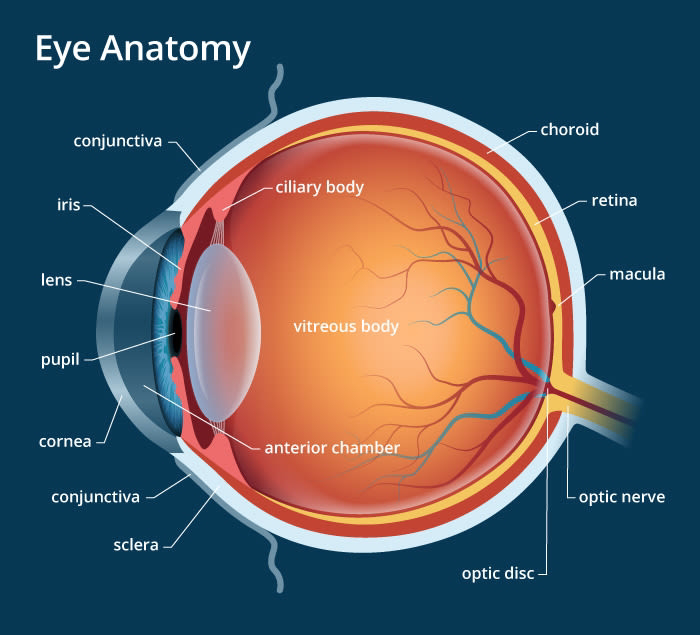Anatomy of the eyeball
The whole anatomy of various part of eye.
THE EYEBALL
The eyeball may be a cystic structure kept distended by the pressure inside it. Although, generally mentioned as a globe, the eyeball isn't a sphere but an ablate spheroid.
The central point on the maximal convexities of the anterior and posterior curvatures of the eyeball is named the anterior and posterior pole, respectively. The equator of the eyeball lies at the mid plane between the 2 poles.
Dimensions of an adult eyeball
Anteroposterior diameter 24 mm
Horizontal diameter 23.5 mm
Vertical diameter 23 mm
Circumference 75 mm
Volume 6.5 ml
Weight 7 gm
Coats of the eyeball
The eyeball comprises three coats: outer (fibrous coat), middle (vascular coat) and inner (nervous coat).
1. Fibrous coat.
it's a dense strong wall which protects the intraocular contents. Anterior 1/6th of this fibrous coat is transparent and is named cornea.
Posterior 5/6th opaque part are called sclera. Cornea is about into sclera sort of a watch glass. Junction of the cornea and sclera is named limbus. Conjunctiva is firmly attached at the limbus.
2. Vascular coat (uveal tissue).
It supplies nutrition to the varied structures of the eyeball. It consists of three parts which from anterior to posterior are : iris, membrane and choroid.
3. Nervous coat (retina).
It’s concerned with visual functions.
Segments and chambers of the eyeball
segments: anterior and posterior.
1. Anterior segment.
It includes lens (which is suspended from the membrane by zonules), and structures anterior thereto, viz., iris, cornea and two aqueous humour-filled spaces: anterior and posterior chambers.
Anterior chamber.
It is bounded anteriorly by the rear of cornea, and posteriorly by the iris and a part of membrane . The anterior chamber is about 2.5 mm deep within the centre in normal adults.
It is shallower in hypermetropes and deeper in myopes, but is nearly equal within the two eyes of an equivalent individual. It contains about 0.25 ml of the aqueous humor.
Posterior chamber.
It’s a triangular space containing 0.06 ml of aqueous humor. It’s bounded anteriorly by the posterior surface of iris and a part of membrane, posteriorly by the lens and its zonules, and laterally by the membrane.
2. Posterior segment.
It includes the structures posterior to lens, viz., vitreous humor (a gel like material which fills the space behind the lens), retina, choroid and blind spot
Tags:
ANATOMY OF EYE

